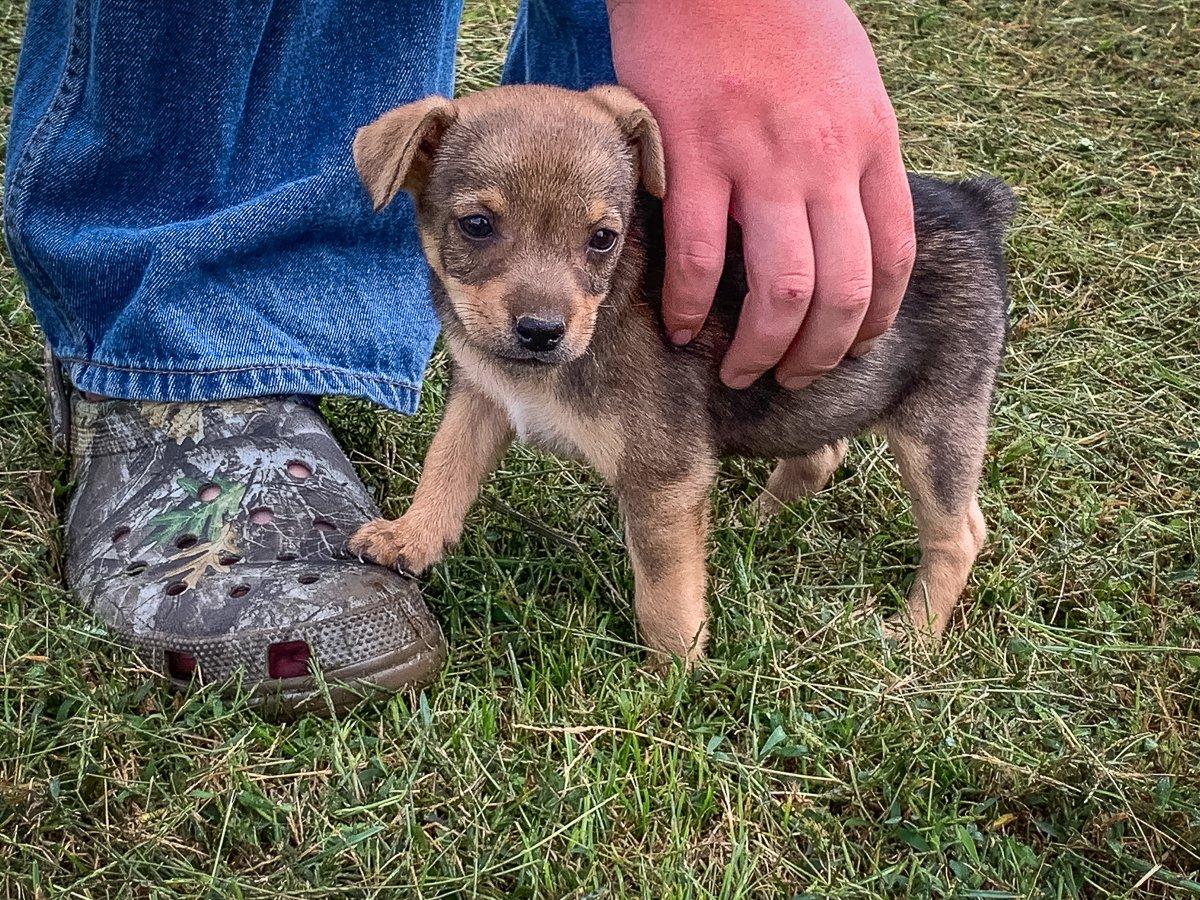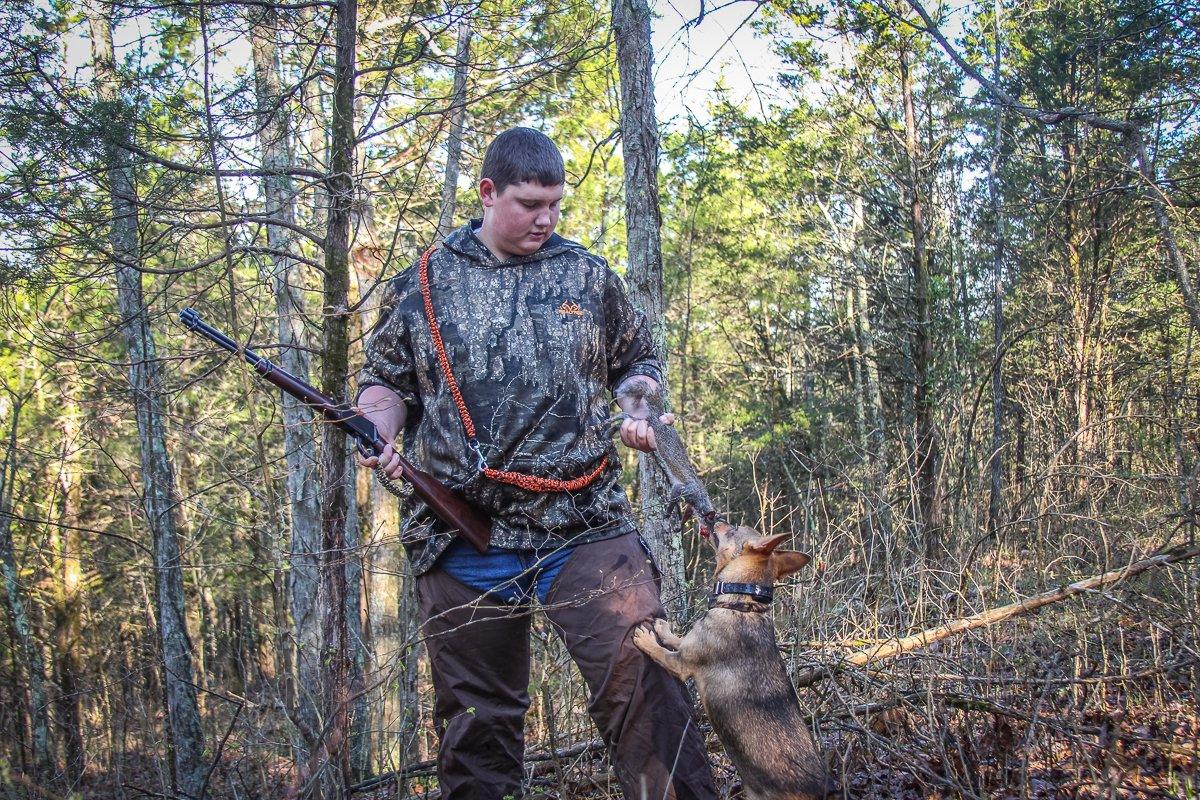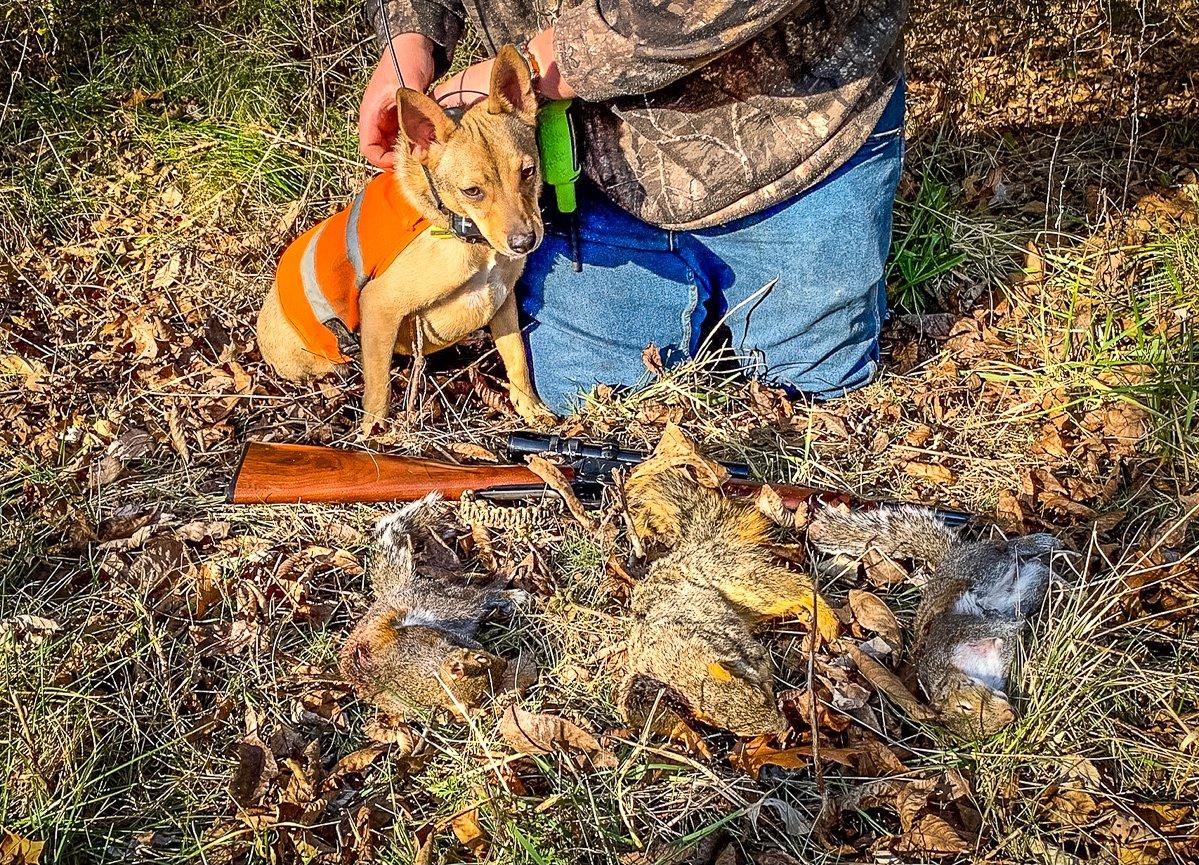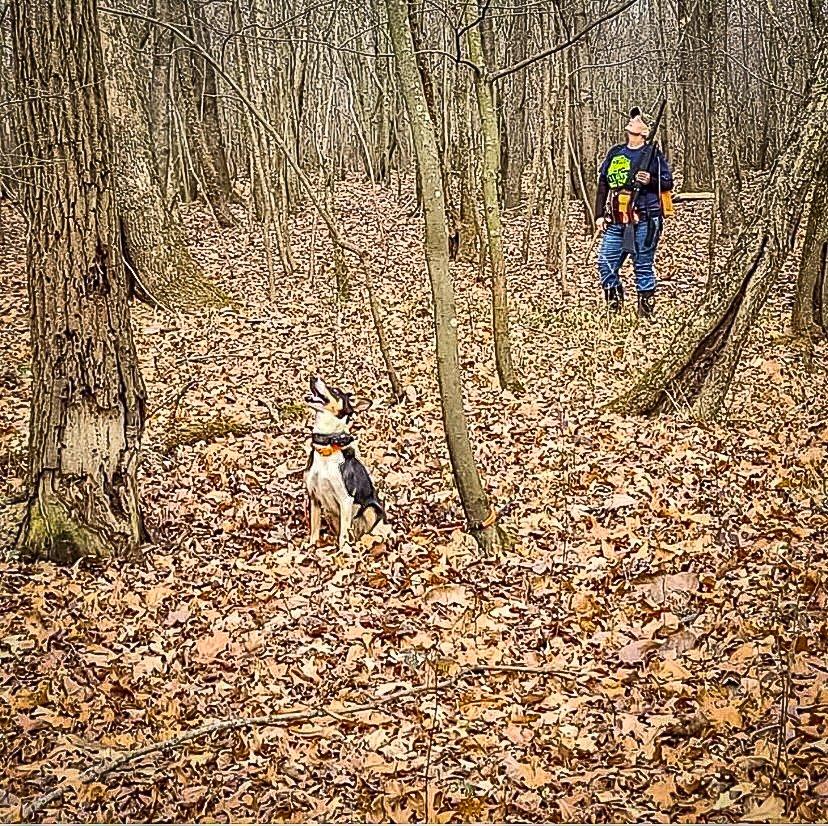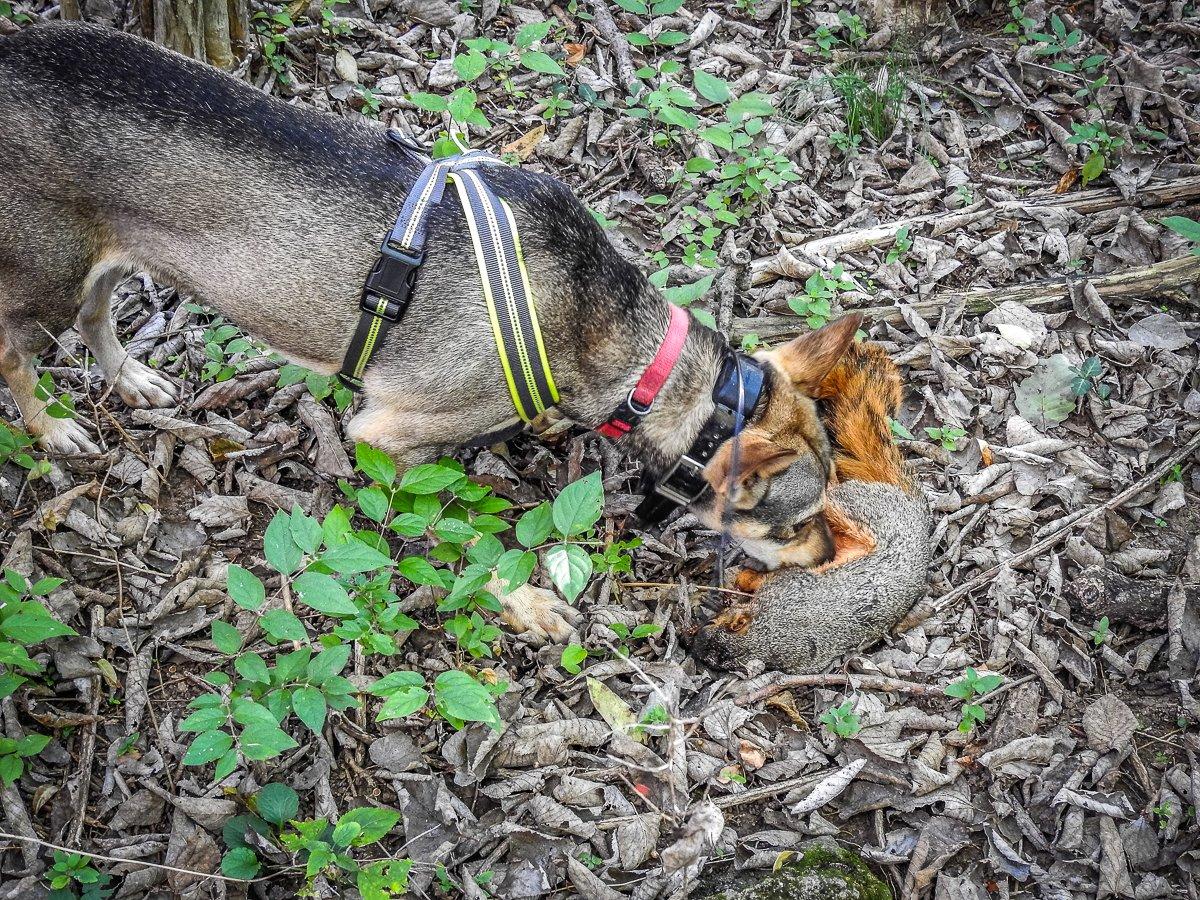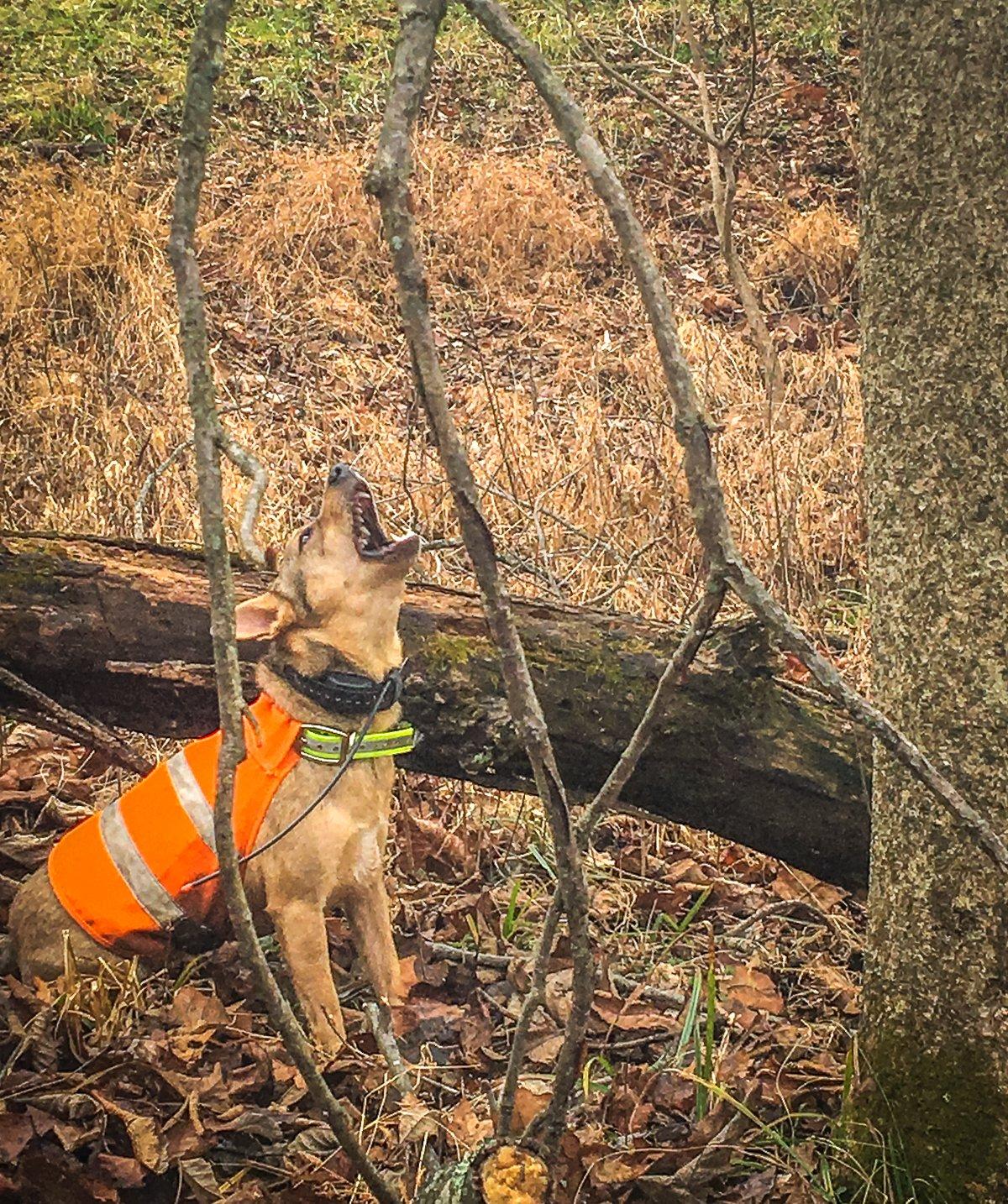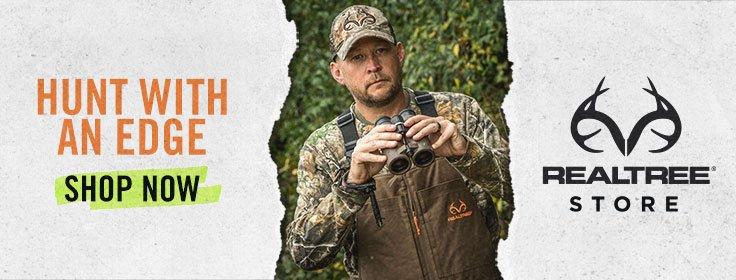Squirrel hunting with dogs is a blast. From picking the right puppy to teaching fundamentals, here's how to get started
The last thing I needed was another hunting hobby. Between hunting at home and out-of-state trips, there seems to be something going on every weekend from September to February. Besides, I'd squirrel hunted all my life in the traditional, sneak-slowly-through-the-hardwoods way. I'd never hunted with squirrel dogs. How much better could it be? That's what I asked myself as my son, Potroast, and I pulled up to the designated meeting spot with Tobby Oaks and his mountain feist, Miss Squall.
What we saw over the next five hours changed the way we'll spend our hunting seasons from now on. Squall worked the woods around us like a machine, showing us more squirrels than I thought possible on an unseasonably hot and windy day. We were hooked. Potroast and I talked about squirrel dogs on our trip home and how much he wanted one. Truth was, I did too.
After several more trips with Tobby and Squall, we decided to get a feist of our own. We went to see Earl Reynolds, the breeder who had produced Squall, along with countless other champion squirrel dogs now living and hunting in more than 30 states across the country.
I've been hunting with dogs for more than 74 years. I guess you can say I was born into it, says Reynolds. Over the years, Earl has hunted with multiple breeds, including a squirrel hunting collie when he was a kid. More than 20 years ago, he settled on the mountain feist as his breed of choice. They hunt closer than hounds or curs, he says. That's important today where properties are small and permission to cross lines is getting harder and harder to get. I want a dog that hunts with me instead of me hunting with the dog, and feists just fit that bill.
(Don't Miss: 6 Reasons Why Kids Love Squirrel Hunting with Dogs)
Earl began crossing feists to get the attributes he wanted in a dog. Not all those first crosses worked, he says, but eventually I started to see the traits I was looking for. Reynolds-bred dogs now show up regularly in competition hunts all across the country. I can recognize a dog out of my line from a photo when I see them on social media or competition hunt websites. They just have a particular look, he says.
Potroast picked out a small female from one of Earl's litters. He named her Miss Ellie, and the two bonded immediately. Training started right away. With tips from Earl and Tobby, we began our trip down this squirrel dog rabbit hole. Miss Ellie is well into her second season now and coming along nicely.
Does the thought of hunting squirrels with a dog appeal to you? Here are 10 tips that helped us:
1. Get in the Woods
Both Reynolds and Oaks say there is no substitute for woods time when it comes to making a squirrel dog. Get the dog in the timber as much as possible. When that first squirrel runs across the ground and up the tree in front of them, their instinct will kick in, says Reynolds. Knock that squirrel out of the tree down on them, and you have a good start.
2. Pick the Right Dog
We chose a mountain feist because many of the areas we hunt are small properties and we wanted a dog that would hunt close.
Some squirrel hunters hunt big timber, and they like a dog that hunts in a straight line, wide-open style, Reynolds says. Often it's coon hunters who are used to larger hounds who cover large tracts of timber and like to squirrel hunt the same style in the same areas.
Many of these hunters go with a larger breed like one of the many cur or hound varieties. These stockier dogs can travel much longer distances than smaller breeds and often pull double duty chasing squirrels during the day and raccoons at night.
(Check This Out: Aggressive Squirrels Attack Residents of New York City)
Several other breeds have their fans as well. Norwegian elkhounds, many of the terriers, and even Finnish spitz all have their fans. Do some research on different breeds and how they hunt before buying your dog. Pick the one that fits your hunting style and property size.
3. Be Patient
Once you have a dog, give it time. Just like kids, not every dog matures at the same rate, says Tobby Oaks. Every once in a while, you get one of those magic dogs that hit the woods at 4 or 5 months old and tree squirrels like they have been doing it for years. Those dogs are a rare gift. Just as often, it takes a dog a year or two for the light to go on.
Last year, my young dog, Kaos, was about a year old and she didn't want to get out of sight of me while we hunted. She relied on Squall to find the squirrels, never venturing out on her own. This year, she has really come into her own. She hunted her first competition hunt earlier this year, the UKC Mountain Feist Association Feist Days, and finished in the top 10 against some of the best dogs in the country. The difference was time and maturity, he says.
Dogs aren't human and don't think the same way we do. It's hard to put ourselves into their mind, but we have to try, says Oaks. If what you are doing doesn't work, try going at it from a different direction. Eventually, you and the dog will figure things out together.
4. Get the Right Equipment
Both Oaks and Reynolds highly recommend a good GPS tracking collar to keep up with the dog when it is out of your sight. A tracking collar will let you know exactly where your dog is and what it's doing at all times. Units like the Dogtra Pathfinder allow a user to track multiple dogs at the same time, as well as see what ground has been covered.
An added benefit is the ability to correct unwanted behavior through sound tones or mild stimulation. I never like to shock a dog, says Oaks, but there are times when it can be necessary. Say a dog is about to cross a busy nearby road or onto another property. You need to be able to get the dog's attention immediately, and a good collar system lets you do that.
Besides a collar, an orange dog vest helps with visibility in the woods. You will also need a good leash to hold your young dog in place at a tree and teach it to stay put once it has a squirrel located.
5. Hunt a Pup with an Experienced Dog
Both Reynolds and Oaks say hunting a pup with an older, more experienced dog in the beginning can be helpful. The pup can see how the old dog reacts to tracks and squirrels in the tree, and most pups naturally like to join in when another dog is barking.
That said, both hunters caution that young dogs need some alone time in the woods as well. Hunting with older dogs can be overdone. The pup learns to defer to the more experienced dog instead of hunting on its own. Just like a pup can learn how it's done correctly, it can also pick up bad habits from an older dog. Both Tobby and Earl recommend hunting a pup with an older dog a few times, then getting out in the woods alone as often as possible.
6. Give a Little Help — But Not Too Much
In states where the practice is legal, many hunters like to live-trap squirrels and put them in wire cages suspended from a low branch for their pup to tree. This can teach a dog to look up in the tree for the squirrel and will often cause them to bark steadily since they never lose sight of their quarry.
Another trick many hunters use is to set up feeders with shelled or ear corn to attract squirrels to a particular area. After the squirrels are using the area regularly, the pup is led through the target-rich environment, increasing its chances of finding a squirrel on the ground and chasing it to a nearby tree.
Reynolds cautions that both practices can be overdone. A smart dog will learn pretty quickly that all it has to do is wait for you to show it a squirrel. They learn to depend on the easy mark and don't develop the ability to hunt on their own. I've even seen people put squirrel feeders just outside their dog's kennel. Eventually, the dog just gets tired of barking at the squirrels and starts to ignore them. It can quickly become too much of a good thing. It's fine to start a really young pup like that but get it on wild squirrels in open woods as soon as possible.
Again, depending on what state you live in, one or both of these practices can be against regulations. Check the hunting guide in your state before doing either.
(Don't Miss: 8 Mistakes Rookie Coyote Hunters Make)
7. Don't Shoot Right Away
When your pup does make a tree, now's the time to get excited. Praise the dog, and talk to it in an encouraging voice. Show the dog that you are pleased and excited. Don't be in a rush to shoot the squirrel right away. Take as much time as you can to praise your pup and let it know it's doing the right thing.
"I want the dog looking at the squirrel and not at me when I shoot."
Reynolds adds a tip for shooting out a squirrel with a young dog: I like to leash my dog to a nearby tree on one side of the treed squirrel while I go around the opposite side of the tree. Most of the time, that squirrel is going to move around to the off side, away from the hunter. I want the dog looking at the squirrel and not at me when I shoot. I hold off the trigger until I see that pup locked onto the squirrel, then I shoot and let the pup watch it all the way to the ground. The dog needs to learn to focus on the squirrel and not the shooter in case the squirrel timbers over to another tree in an attempt to get away.
8. Reward Correct Behavior, Ignore Wrong Behavior
Oaks says how you act both when a pup does something right and when it does something wrong will go a long way toward helping it understand what you want it to do: I always like to show a pup I'm excited when it's doing the right thing. Seeing me be excited and encouraging is almost as much a reward to a young dog as actually treeing the squirrel."
At the same time, he continues, I never want to reward behavior that isn't what I'm looking for in a dog. If that pup isn't actively treeing and barking, I'm not going to show it much excitement and praise. I like to leash a pup to a tree and hang a freshly killed squirrel just out of reach. That pup's going to want that squirrel more than anything, but if it isn't barking at it, I'm not going to let it have the squirrel as a reward. I'll talk to it excitedly and shake the squirrel in the tree, but I'm not going to praise and love on it until it barks. Sometimes, I'll even walk away and leave the dog and the squirrel behind. When the pup can't stand it anymore, it will start to bark. That's when I go back and praise the dog and shake the squirrel out to them so they can get to it.
9. Wear Your Boots Out
There is no substitute for covering ground with a young dog, Oaks says. Get them out as often as you can, even if it's just a short hunt. Spend as much time in the woods as possible and cover some ground. Be prepared to wear out a good set of boots to make a squirrel dog.
10. Have Fun
Sure, the end game to all of this is to make a great squirrel dog, but it needs to be fun for both you and your pup if you are going to stay with it. I love killing squirrels over my dogs. But what really does it for me is hunting with friends and family, taking other people, especially kids, who have never squirrel hunted over dogs before and showing them how fun it is, says Oaks. I've made so many lifelong friends from all over the country from squirrel dog hunting.
I can attest. There aren't too many things more satisfying and fun than spending a day in the woods treeing squirrels with a good dog. Squirrel hunting with dogs is more of a social affair for us. Unlike the long hours spent alone in the deer stand, we can easily squirrel hunt with a group of friends. There is no better way to introduce a new hunter to the sport than by chasing a squirrel dog through the woods. The nonstop action, the excitement of a good tree, the frantic search to locate the squirrel hiding high in the timber, and the challenge of making a good shot once you do is tailor made for young hunters.
Think squirrel dog hunting may be right up your alley? Do yourself a favor and check for local clubs in your area. Dog hunters are a social group by nature, and you will often find an active group close to you. Invite a few out for a hunt so that you can tag along and see what it's all about. You might just end up training a dog of your own.
Check out the author's full list of delicious squirrel recipes on Realtree's Timber2Table blog.


